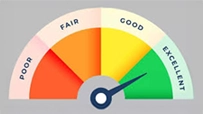Understanding Gold Loan Margin Call: What Borrowers Should Know
September 03, 2025

Gold loans are one of the most popular financing options in India, with the market growing to ₹7.1 lakh crore in 2024. These loans are quick to disburse, require minimal documentation, and use gold as collateral. However, a key concept every borrower should understand is the margin call in gold loans. This critical aspect ensures that lenders manage their risk effectively, especially during fluctuating gold prices. Let’s delve into what margin calls mean, how they work, and what borrowers should do when faced with one.
Understanding Gold Loan Margin Call – What is It?
A margin call in a gold loan occurs when the value of the gold pledged as collateral falls below a certain threshold due to fluctuations in market prices. Banks typically sanction loans based on the Loan-to-Value (LTV) ratio, which is capped at 75% by the Reserve Bank of India (RBI). If gold prices drop significantly, the pledged gold’s value may no longer sufficiently cover the loan amount, triggering a margin call.
In simple terms, a margin call is a request from the lender to the borrower to either:
- Repay a part of the loan to maintain the LTV ratio.
- Pledge additional gold to restore the collateral’s value.
Why Do Margin Calls Happen?
1. Gold Price Volatility
Gold prices are influenced by various factors such as international markets, geopolitical tensions, and inflation. In 2024, gold prices saw fluctuations between ₹56,000 to ₹63,000 per 10 grams, leading to an increase in margin calls.
2. High LTV Ratios
Borrowers often opt for the maximum LTV ratio to secure higher loan amounts. While this offers immediate financial relief, it also increases the likelihood of margin calls during price corrections.
3. Loan Tenure
Longer loan tenures expose borrowers to a greater risk of gold price volatility, making margin calls more probable.
What Should You Do During a Margin Call?
Facing a margin call can be stressful, but timely action can help you manage the situation effectively. Here’s what you can do:
- Understand the Notice: The bank will provide a clear notice detailing the shortfall in collateral value and the actions required. Read it carefully to understand the deadline and options.
- Make a Partial Payment: If you have funds, consider repaying a portion of the loan to restore the LTV ratio.
- Pledge Additional Gold: If you have more gold assets, pledging them can satisfy the margin call without reducing the loan amount.
- Negotiate with the Bank: In some cases, lenders may offer flexibility in timelines or other adjustments based on your financial situation.
Avoid Default: Ignoring a margin call can lead to default, resulting in the lender auctioning your pledged gold to recover the dues.
Impact of Ignoring Margin Calls
Failure to act on a margin call can have severe consequences, including:
- Gold Auction: Lenders have the right to auction the pledged gold to recover their dues.
- Credit Score Impact: A default on your gold loan can negatively affect your credit score, making it difficult to secure future loans.
Legal Action: Persistent defaults may lead to legal proceedings by the lender.
How to Minimise the Risk of Margin Calls
- Opt for a Lower LTV: While high LTV ratios are tempting, choosing a lower ratio provides a cushion against price fluctuations.
- Monitor Gold Prices: Keep an eye on gold market trends, especially during long loan tenures.
- Maintain Emergency Funds: Setting aside funds for unexpected situations like margin calls can prevent financial stress.
- Choose Reputable Lenders: Established lenders often have better customer service and provide more flexibility during financial challenges.
Final Thoughts
Understanding the concept of margin calls is crucial for anyone considering a gold loan. While these loans offer quick and easy financing, market volatility can lead to unexpected challenges. By opting for a prudent LTV ratio, monitoring gold prices, and acting swiftly during margin calls, you can safeguard your assets and maintain financial stability.
Get Gold Loans up to ₹25 lakh at attractive interest rates with Ujjivan Small Finance Bank. Enjoy quick disbursal and a stress-free loan journey. Apply now!
Disclaimer:
The contents herein are only for informational purposes and generic in nature. The content does not amount to an offer, invitation or solicitation of any kind to buy or sell, and are not intended to create any legal rights or obligations. This information is subject to updation, completion, amendment and verification without notice. The contents herein are also subject to other product-specific terms and conditions, as well as any applicable third-party terms and conditions, for which Ujjivan Small Finance Bank assumes no responsibility or liability.
Nothing contained herein is intended to constitute financial, investment, legal, tax, or any other professional advice or opinion. Please obtain professional advice before making investment or any other decisions. Any investment decisions that may be made by the you shall be at your own sole discretion, independent analysis and evaluation of the risks involved. The use of any information set out in this document is entirely at the user’s own risk. Ujjivan Small Finance Bank Limited makes no representation or warranty, express or implied, as to the accuracy and completeness for any information herein. The Bank disclaims any and all liability for any loss or damage (direct, indirect, consequential, or otherwise) incurred by you due to use of or due to investment, product application decisions made by you on the basis of the contents herein. While the information is prepared in good faith from sources deemed reliable (including public sources), the Bank disclaims any liability with respect to accuracy of information or any error or omission or any loss or damage incurred by anyone in reliance on the contents herein, in any manner whatsoever.
To know more about Ujjivan Small Finance Bank Products Visit:"https://www.ujjivansfb.in"
All intellectual property rights, including copyrights, trademarks, and other proprietary rights, pertaining to the content and materials displayed herein, belong
to Ujjivan Small Finance Bank Limited or its licensors. Unauthorised use or misuse of any intellectual property, or other content displayed herein is strictly prohibited and the same is not intended for distribution to, or use by, any person in any jurisdiction where such distribution or use would (by reason of that person’s nationality, residence or otherwise) be contrary to law or registration or would subject Ujjivan Small Finance Bank Limited or its affiliates to any licensing or registration requirements.
FAQs
1. What is a gold loan margin call?
A margin call in a gold loan is a request by the lender to the borrower to either repay part of the loan or pledge additional gold when the collateral’s value falls due to market fluctuations.
2. Why do gold loan margin calls happen?
Margin calls occur due to falling gold prices, high LTV ratios, or long loan tenures that expose borrowers to price volatility. Lenders use margin calls to manage their risk.
3. How is the LTV ratio calculated?
The Loan-to-Value (LTV) ratio is the loan amount sanctioned as a percentage of the pledged gold’s market value. In India, the RBI caps this at 75% for gold loans.
4. What happens if I ignore a margin call?
Ignoring a margin call can lead to the auction of your pledged gold, negatively affect your credit score, and may even result in legal action by the lender.
5. Can I avoid margin calls?
While margin calls can’t be entirely avoided, choosing a lower LTV ratio, monitoring gold prices, and maintaining emergency funds can reduce the risk.
6. What should I do if I receive a margin call?
You can either repay a part of the loan, pledge additional gold, or negotiate with the lender for an extension or alternative solution.
7. How long do I have to act on a margin call?
The timeframe varies by lender but is usually mentioned in the margin call notice. It’s advisable to act promptly to avoid further complications.
8. Does every gold loan have margin call risks?
Yes, every gold loan carries the risk of a margin call, but the likelihood depends on factors like gold price volatility, LTV ratio, and loan tenure.
9. Are margin calls common in India?
Margin calls are more frequent during periods of gold price volatility. In 2024, the increase in price fluctuations led to a higher incidence of margin calls.
10. Can I refinance my gold loan during a margin call?
Yes, refinancing your gold loan with another lender offering a lower LTV ratio or better terms is an option. However, ensure you understand the costs and terms before switching lenders.
Latest Blogs

APK Fraud: How One Wrong Download Could Empty Your Bank Account
May 13, 2025
Picture this. You’re sipping your evening tea when your phone rings.

Gold Loan LTV Ratio Explained (75% to 85%): What It Means for Borrowers
March 20, 2025
In June 2025, the Reserve Bank of India (RBI) introduced a significant relaxation for gold loan borrowers: the maximum Loan-to-Value (LTV) ratio for loans below ₹2.5 lakh was raised to 85%, up from the long-standing cap of 75%. Loans between ₹2.5 lakh and ₹5 lakh can now go up to 80%, while loans above ₹5 lakh continue under the 75% ceiling.

Good Debt vs Bad Debt: Learn the Difference
August 13, 2025
Every month, millions of Indians wait for the familiar debit alert, an EMI deducted from their account.

Got a Tax Refund? 5 Smart Ways to Put Your 2025 Refund to Work
August 13, 2025
For many taxpayers, there’s a unique sense of relief when a tax refund arrives.

Credit Score Not Improving? 5 Mistakes You Might Be Making
August 13, 2025
For most of us, a credit score feels like a silent judge sitting in the background of our financial lives.




